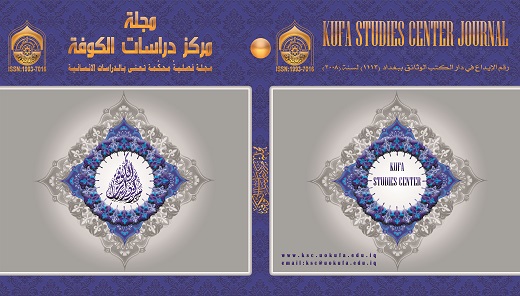في محافظة ذي قار دراسة ميدانية لعام 2015 HPI-2 التحليل المكاني لقياس دليل الفقر البشري
DOI:
https://doi.org/10.36322/jksc.v1i46.5084Abstract
يعد دليل الفقر البشري H P I – 2 من القوانين الإحصائية التي تستخدم لقياس الفقر والذي تم استخدامه من قبل الأمم المتحدة ويستخدم هذا المقياس أعداد متغيرات متعددة تكمن حسب عدد المتغيرات التي تقيس الفقر وهذا البحث تناول حالات قياس الفقر من بطالة وعدم القدرة على القراءة والكتابة ومتوسط العمر للعيش والبقاء على قيد الحياة وكذلك نسبة الدخل الشهري للاسرة الذي يعد من المحددات الاساسية للفقر والذي تم التوصل الى ارتفاع نسبة دلــيل الفقر البشـــري H P I – 2 بين عامي 2009 و2015 حيث ان نسبة دليل الفقر البشري H P I – 2 في محافظة ذي قار عام2009 كانت بنسبة (20%) ثم ارتفع الى (29%) عام 2015 مما يدل على ارتفاع نسبة الفقر في المحافظة.The Human Poverty Index (HPI-2) was an indication of the standard of living in a country, developed by the United Nations (UN) to complement the Human Development Index (HDI-2) and was first reported as part of the Human Development Report in 1997. It was considered to better reflect the extent of deprivation in developed countries compared to the HDI. This research dealt with situations of poverty measure such as unemployment, the inability to read and write , and the average age expectancy as well as the proportion of monthly income for the family which is one the main determinants of poverty. We have been reached that the poverty has been increased during 2009-2015, where the poverty rate in the province of Thi-Qar in 2009 was 20% and it increased to 29% in 2015 which indicating a high poverty in the province.
Downloads
Downloads
Published
How to Cite
Issue
Section
License
Copyright (c) 2022 مجلة مركز دراسات الكوفة | Journal of Kufa Studies Center

This work is licensed under a Creative Commons Attribution 4.0 International License.
Permit others to distribute and copy the manuscript, to create extracts, abstracts, and other revised versions, adaptations, or derivative works of or from the manuscript (such as a translation), to include in a collective work, to text or data mine the article, even for commercial purposes, as long as they credit the author(s), do not represent the author as endorsing their adaptation of the article, and do not modify the article in such a way as to damage the author''''s honor or reputation. Further details are found at Creative Commons Attribution 4.0 International (CC BY 4.0)






























